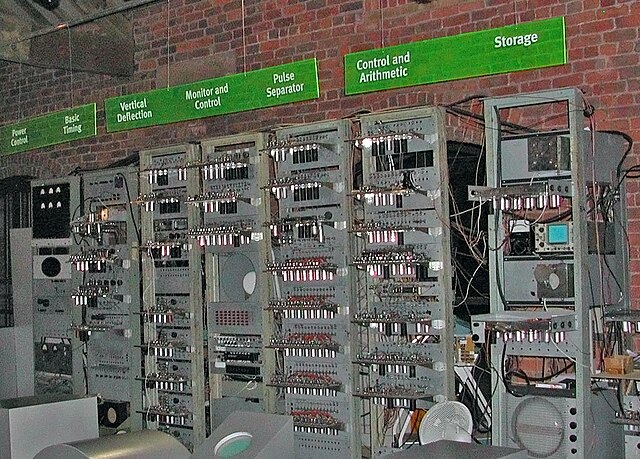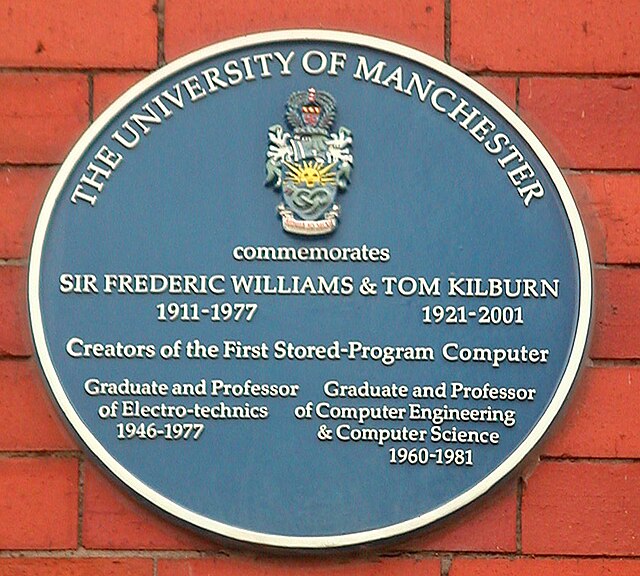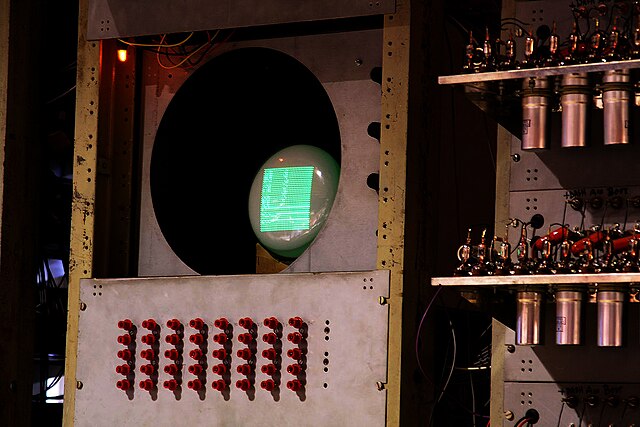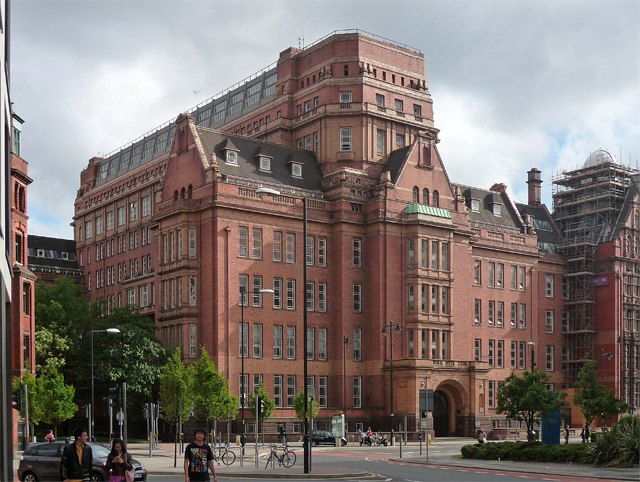The Manchester Baby, also called the Small-Scale Experimental Machine (SSEM), was the first electronic stored-program computer. It was built at the University of Manchester by Frederic C. Williams, Tom Kilburn, and Geoff Tootill, and ran its first program on 21 June 1948.
Replica of the Baby at the Science and Industry Museum in Castlefield, Manchester
A plaque in honour of Williams and Kilburn at the University of Manchester
The output CRT is immediately above the input device, flanked by the monitor and control electronics.
Output CRT
The University of Manchester is a public research university in Manchester, England. The main campus is south of Manchester City Centre on Oxford Road. The university owns and operates major cultural assets such as the Manchester Museum, The Whitworth art gallery, the John Rylands Library, the Tabley House Collection and the Jodrell Bank Observatory – a UNESCO World Heritage Site. The University of Manchester is considered a red brick university, a product of the civic university movement of the late 19th century. The current University of Manchester was formed in 2004 following the merger of the University of Manchester Institute of Science and Technology (UMIST) and the Victoria University of Manchester. This followed a century of the two institutions working closely with one another.
The Old Quadrangle at the University of Manchester's main campus on Oxford Road
The Sackville Street Building, formerly the UMIST Main Building
The atrium inside the £38m Manchester Institute of Biotechnology
The buildings of the University of Manchester and the Manchester Museum in Oxford Road








